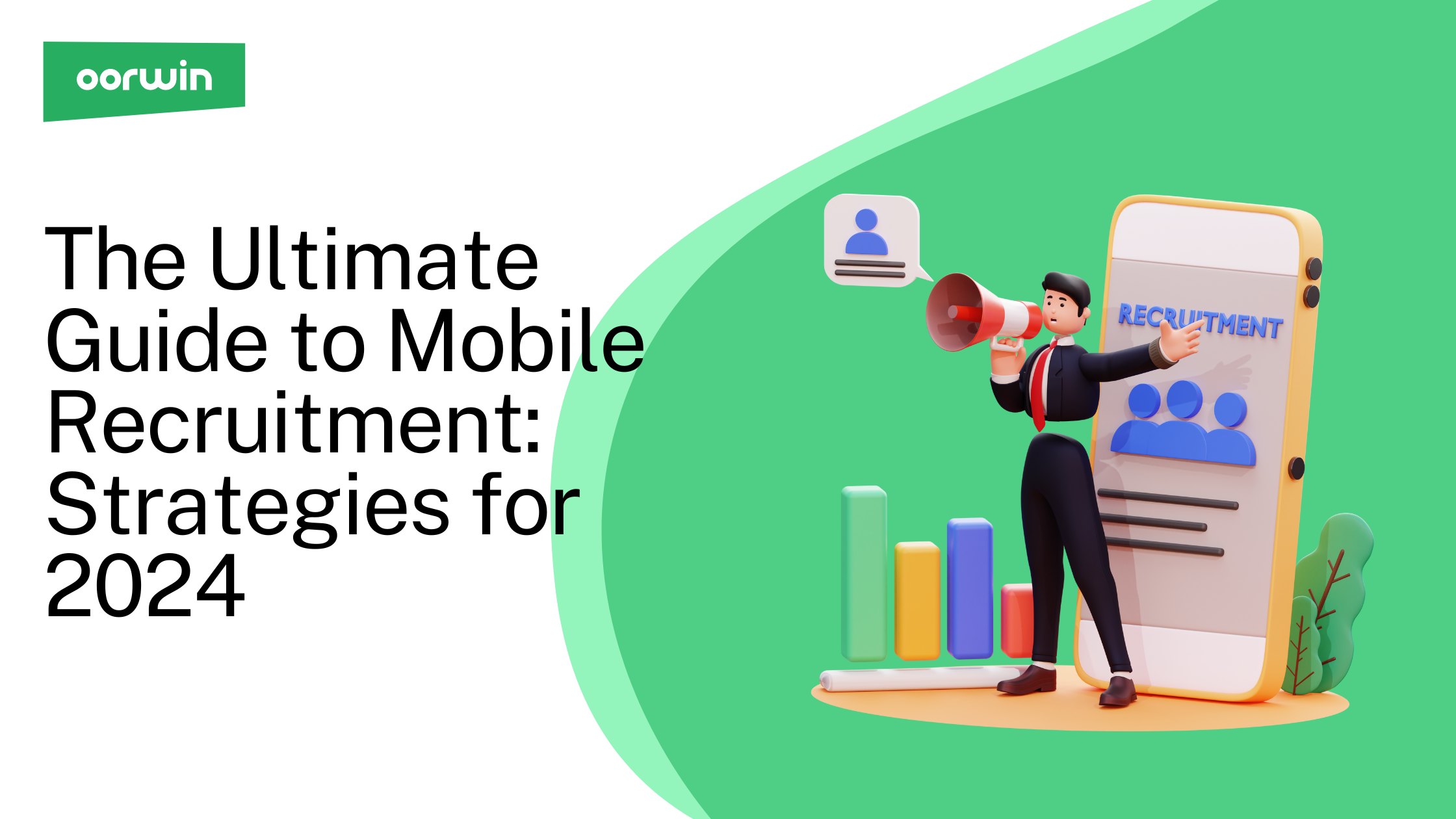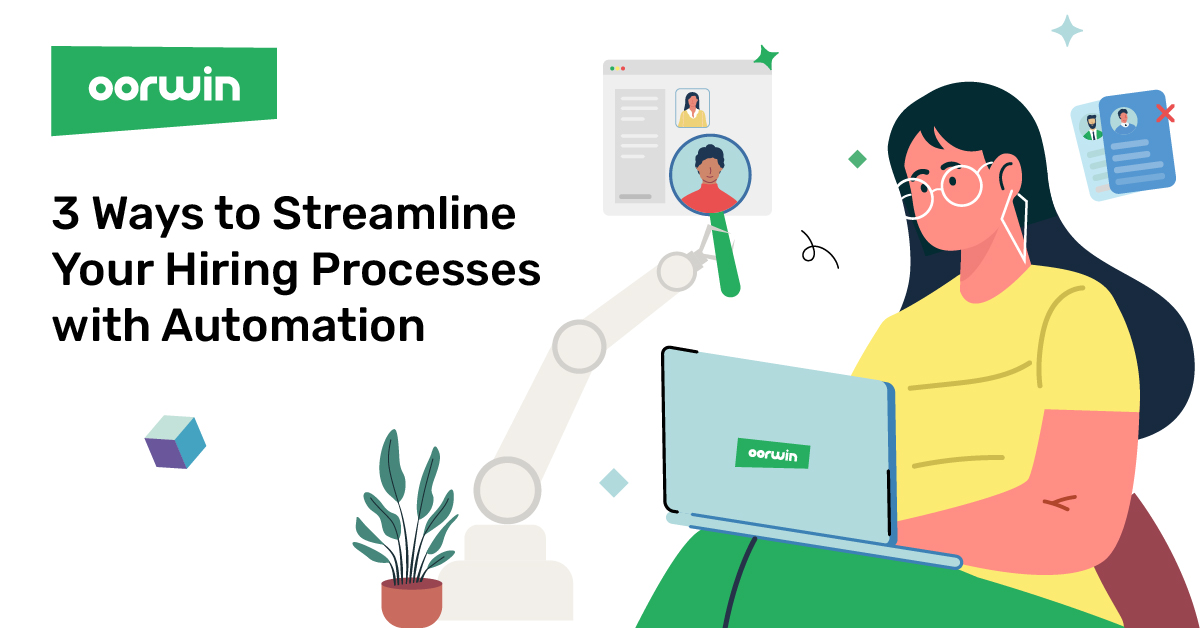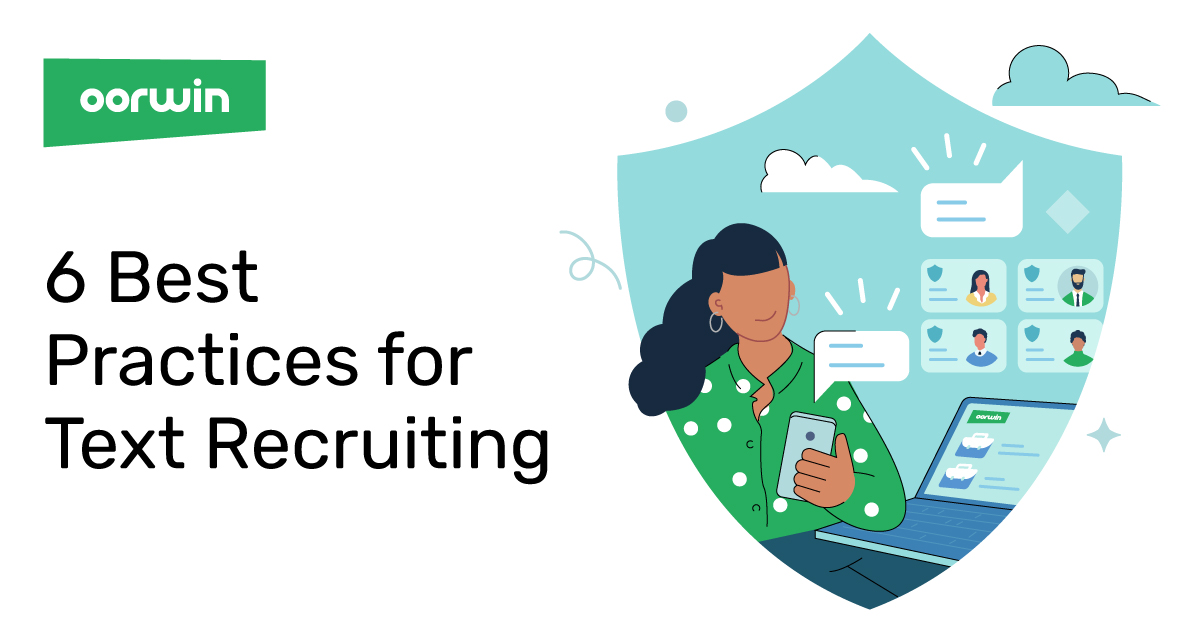Mastering Mobile Recruitment in 2024
In the contemporary job market, mobile recruitment has evolved into an essential strategy. Given the ubiquitous use of smartphones for communication and information retrieval, businesses must adjust their recruitment approaches. As we progress into 2024, proficiency in mobile recruitment is not merely a choice but a vital requirement for companies aiming to engage and secure top-tier talent. The adaptability to the mobile landscape is now imperative, reflecting the shift in how individuals navigate and engage with job opportunities through their primary communication and information platform – their smartphones.
What is Mobile Recruitment
Mobile recruitment refers to the process of attracting, engaging, and hiring candidates through mobile technology. This includes everything from mobile-optimized career websites to the use of mobile apps for talent acquisition. As the world becomes more digitally inclined, mobile recruitment becomes a key player in the hiring process.
The Importance of Mobile Recruitment in Today’s Job Market
In the contemporary job market, mobile recruitment is indispensable, not merely advantageous. A significant portion of job seekers relies on their mobile devices for job searches, underscoring the vital importance of mobile talent acquisition strategies. Firms that neglect the incorporation of mobile recruiting techniques jeopardise their access to a vast talent pool, putting themselves at a distinct disadvantage in attracting potential candidates.
5 Top Strategies for Mobile Recruiting 2024
To remain competitive in 2024, companies must embrace robust mobile recruiting strategies. Five crucial approaches include leveraging mobile-friendly platforms, optimizing application processes for seamless mobile experiences, utilizing social media for targeted outreach, implementing AI-driven tools for candidate engagement, and prioritizing responsive design to enhance overall accessibility and engagement in the evolving digital landscape.
Mobile-optimized career websites
Ensuring career websites are tailored for mobile devices is crucial, providing job seekers with a smooth and user-friendly experience. Optimization enhances accessibility, allowing candidates to easily navigate job listings, submit applications, and explore company details seamlessly from their mobile devices. Responsive design and intuitive interfaces contribute to an improved overall user experience, meeting the growing trend of mobile-centric job searches.
Utilizing Mobile Apps for Talent Acquisition
Harnessing the power of mobile apps can revolutionize the recruitment process, creating an efficient platform for both recruiters and candidates. These apps streamline tasks such as job posting, application submissions, and communication, fostering a more agile and responsive hiring process. By using mobile technology, recruiters gain flexibility and accessibility, while candidates benefit from a convenient and on-the-go application experience, ultimately enhancing the efficiency and effectiveness of talent acquisition efforts.
Mobile-friendly communication channels
Embracing mobile-friendly communication channels, such as text messaging and WhatsApp, can significantly elevate candidate engagement. These platforms offer direct and instant communication, facilitating quicker responses and fostering a more dynamic interaction between recruiters and candidates. Leveraging the prevalence of mobile messaging apps caters to the communication preferences of modern job seekers, enhancing the likelihood of effective dialogue and timely updates throughout the recruitment process. Adopting these channels contributes to a more personalized and responsive approach, ultimately improving the overall candidate experience.
Text message recruitment campaigns
Utilizing text messaging campaigns in mobile recruiting offers a direct and personalized approach to engage potential candidates. This powerful tool enables direct outreach, providing an effective means of communication for connecting with individuals in a personal and immediate manner, enhancing the recruitment process.
Whatsapp Recruiting
Leveraging WhatsApp for recruitment optimizes communication with candidates, enhancing the efficiency and streamlining of the hiring process. The platform’s real-time features enable instant connections with potential hires, expediting interactions and significantly improving the overall speed of recruitment activities. The immediacy of communication on WhatsApp facilitates seamless and prompt exchanges, ultimately contributing to a more agile and responsive recruitment workflow. This utilization of the platform not only accelerates the hiring timeline but also enhances the overall effectiveness of engagement with prospective candidates, making it a valuable tool in the modern recruitment landscape.
Use targeted mobile advertising and social media campaigns
Employ targeted mobile advertising and social media campaigns to optimize recruitment efforts. Tailor your advertisements to reach specific demographics and job-seeking audiences, ensuring maximum visibility among potential candidates. Leverage the vast user base of social media platforms to strategically promote job opportunities, engaging with active job seekers. By harnessing the power of targeted mobile advertising and social media campaigns, recruiters can efficiently connect with qualified candidates, creating a dynamic and responsive recruitment strategy that aligns with the evolving landscape of digital communication and job searching trends.
Creating a Mobile-Friendly Candidate Experience
The entire candidate journey, encompassing job discovery, application submission, and beyond, must be optimized for mobile accessibility. Ensuring a seamless and user-friendly experience on mobile devices is imperative for attracting and engaging potential candidates. This includes mobile-friendly job listings and application processes, enhancing overall accessibility and convenience for individuals navigating the job search and application process on their smartphones or tablets.
Best Practices for Mobile Recruitment
Achieve mobile recruitment success with these key practices: prioritize user-friendly interfaces, optimize for mobile devices, streamline application processes, leverage social media, and stay updated on industry trends.
Optimize job listings for mobile devices
Enhance mobile job listings by ensuring they are succinct and easily legible on smaller screens, facilitating a seamless browsing experience for potential candidates.
Streamline the application process
Simplify and streamline the application process to make it user-friendly on mobile devices, allowing candidates to apply effortlessly without encountering unnecessary complexities.
Monitor and analyze mobile recruitment metrics
Conduct consistent monitoring and in-depth analysis of mobile recruitment metrics to gain valuable insights into the effectiveness of your strategy, enabling timely adjustments and improvements for optimal results.
Challenges and Solutions in Mobile Recruiting
Mobile recruiting has become increasingly essential in the modern job market, as smartphones and mobile devices have become ubiquitous in our daily lives. This trend presents both opportunities and challenges for recruiters and employers. The challenges in mobile recruiting range from optimizing the application process for smaller screens to ensuring a seamless user experience.
Challenges in Mobile Recruiting
- Inadequate Mobile-Optimized Career Sites: Many companies’ career sites are not optimized for mobile devices, leading to poor user experiences.
- Lengthy and Complex Application Processes: Mobile users often face cumbersome application processes not suited for small screens.
- Poor Candidate Engagement: There’s a gap in effectively engaging with candidates through mobile platforms.
- Limited Accessibility to Mobile Recruiting Tools: The absence of mobile-friendly recruiting tools and platforms restricts efficient recruitment processes.
- Inconsistent Branding Across Platforms: Often, the employer’s brand messaging and experience are not consistent across mobile and other platforms.
- Data Security and Privacy Concerns: Mobile recruiting raises concerns about the security and privacy of candidate data.
- Ineffective Tracking and Analytics: Difficulty in tracking and analyzing recruitment campaigns effectively on mobile platforms.
- Lack of Personalization in the Recruitment Process: Mobile recruiting often lacks the personalization that candidates experience on other platforms.
- Difficulty in Reaching a Diverse Audience: Mobile recruiting strategies may not effectively target a diverse range of candidates.
- Overlooking Passive Candidates: Mobile recruiting strategies often fail to engage passive candidates who are not actively seeking new opportunities.
Solutions to Overcome Mobile Recruiting Challenges
- Optimize Career Sites for Mobile: Make career sites responsive and user-friendly on mobile devices.
- Simplify Application Processes: Streamline application forms and processes for easy completion on mobile.
- Enhance Candidate Engagement: Use mobile-specific communication channels to improve engagement with candidates.
- Adopt Mobile-Friendly Recruiting Tools: Invest in mobile-compatible recruiting software and applicant tracking systems.
- Maintain Consistent Branding: Ensure employer branding is uniform across all platforms, including mobile.
- Ensure Data Security and Privacy: Implement robust security measures to protect candidate data on mobile platforms.
- Utilize Mobile Analytics: Employ mobile-specific analytics tools to track and measure the effectiveness of mobile recruiting strategies.
- Personalize the Mobile Experience: Use AI and machine learning for personalized job recommendations and content on mobile platforms.
- Target a Diverse Audience: Leverage mobile advertising and social media to reach a broader, more diverse candidate pool.
- Engage Passive Candidates: Develop strategies that target passive candidates through mobile channels.
Discover effortless mobile recruiting with Oorwin! Our innovative platform tackles the toughest challenges in mobile talent acquisition with its latest integration with Whatsapp to help enhance candidate engagement. Embrace a seamless, mobile-optimized experience to attract top talent anywhere, anytime. Join Oorwin today and transform your mobile recruiting journey!

Case Studies and Success Stories in Mobile Recruiting
Numerous organisations have effectively integrated mobile recruiting strategies, resulting in notable enhancements to their recruitment processes and overall outcomes. These triumphs stand as instructive illustrations for those seeking to elevate their mobile recruiting endeavours. Successful implementations underscore the transformative impact of leveraging mobile platforms in talent acquisition. 89% of job seekers consider their mobile devices essential for job searching
Mobile recruiting has become a vital aspect of talent acquisition, with various companies successfully implementing strategies to overcome its challenges. Here are some notable case studies and success stories:
1. iCIMS: This platform offers a range of solutions for mobile recruiting, including a cloud-based Applicant Tracking System (ATS), AI-enabled digital assistants for candidate engagement, and analytics for tracking recruitment effectiveness. iCIMS has helped various companies, such as The Cheesecake Factory, in hiring large numbers of employees annually while providing an excellent candidate experience. More details on their specific case studies can be found on their website.
2. JazzHR: They provide detailed case studies on how different organizations have utilized their services for effective mobile recruiting. Some examples include Rumble Boxing streamlining its hiring process, Comfort Dental using JazzHR for fast hiring of dental professionals, and Hunter Recruitment Advisors supporting its SMB clients. Each case study showcases how JazzHR’s tools and strategies have helped these organizations overcome common recruiting challenges. Further information on these cases is available on their case studies page.
3. Recruiting.com: They present a variety of case studies highlighting how different organizations have utilized their solutions for mobile recruiting. Examples include a large furniture retailer hiring for growth, a law firm improving its candidate experience through a new career site, and a rural hospital using its location to attract candidates nationwide. These case studies demonstrate the effectiveness of Recruiting.com’s strategies in addressing various challenges in mobile recruiting. You can explore more about these success stories on their case study page.
The Future of Mobile Recruiting: Trends and Predictions for 2024
As we move through 2024, it’s interesting to see how mobile recruitment is changing, especially with more AI and mobile video interviews being used. For businesses that want to stay ahead, it’s really important to keep an eye on these trends. If companies want to keep up and make the most of their recruiting efforts, they need to pay attention to these changes and use them to their advantage in this ever-changing job market.
Unlock the potential of mobile recruiting with Oorwin – your partner in the future of talent acquisition. Stay ahead of the curve in 2024 with our cutting-edge technology, seamless mobile interfaces, and predictive analytics. Elevate your recruitment game, adapt to emerging trends, and ensure a candidate-centric approach. Experience the future of hiring with Oorwin – where innovation meets recruitment excellence.

FAQ
1.Why is mobile recruitment important in 2024
In 2024, mobile recruitment is essential due to the pervasive use of smartphones, ensuring seamless and immediate candidate engagement. Mobile platforms facilitate instant job notifications, easy application processes, and responsive communication, meeting the expectations of the modern workforce. This accessibility caters to a mobile-centric audience, enhancing the reach and efficiency of recruitment efforts. Organisations that prioritise mobile recruitment gain a competitive edge by tapping into a broader talent pool and providing a user-friendly experience for candidates navigating the job market on their mobile devices.
2. How can I optimise my job listings for mobile devices
To optimize job listings for mobile devices, prioritise concise and compelling content, ensuring it’s easily scannable. Use a mobile-responsive design for seamless viewing on various screen sizes. Implement clear and user-friendly navigation, simplifying the application process. Optimize load times for swift access, as mobile users often seek quick information. Leverage mobile-friendly formats, such as short paragraphs and bullet points, and ensure that the application form is straightforward, encouraging mobile users to engage with your job listings effortlessly.
3. What role do mobile apps play in recruitment strategies
Mobile apps play a pivotal role in modern recruitment strategies by providing accessibility and convenience. They enable candidates to browse job opportunities, submit applications, and engage with employers anytime, anywhere. Recruiters benefit from streamlined communication, quick responses, and the ability to reach a broader, tech-savvy audience. Mobile apps enhance the overall candidate experience, making it more interactive and efficient, ultimately contributing to the success of recruitment efforts in a rapidly evolving digital landscape.
4.How can I incorporate mobile-friendly application processes
To incorporate a mobile-friendly application process, optimize your job portal for mobile devices. Design a responsive interface for easy navigation, simplify the application form, and minimize text entry. Utilize mobile-friendly formats for document uploads. Ensure seamless integration with cloud storage services. Implement intuitive navigation and provide a quick application option, allowing candidates to save progress. Test the mobile application process extensively to guarantee a user-friendly experience and encourage wider accessibility for potential candidates on various devices.




